#3rd millennium bc
Photo
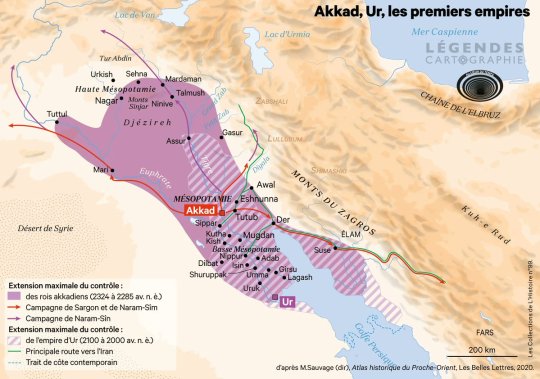
Akkad and Ur, the first empires, 3rd millennium BC.
by LegendesCarto
85 notes
·
View notes
Text
Babylonian Astrology: How Mesopotamian Priests Influenced Your Horoscope | Ancient Origins
Just remember, Mesopotamia is the "cradle of civilization." Pretty much meaning that Mesopotamia came up with astrology. (Don't quote us on this. We're making an educated assumption about this one, friends.)
https://www.ancient-origins.net/history-ancient-traditions/babylonian-astrology-0010806

View On WordPress
#15K BC#17th century#18 Constellations#2nd Millennium BC#3rd millennium BC#400 BC#410 AD#4th century#4th century BC#750 BC#Akkadian#Alexander the Great#Anu#Assyrian#Astrolabe#Astrology#Augustus Caesar#Babylon#Babylonian#Capricorn#Central America#China#Copernicus#Ea#Earth#Enlil#Fire#Firmicus#France#Greeks
5 notes
·
View notes
Text
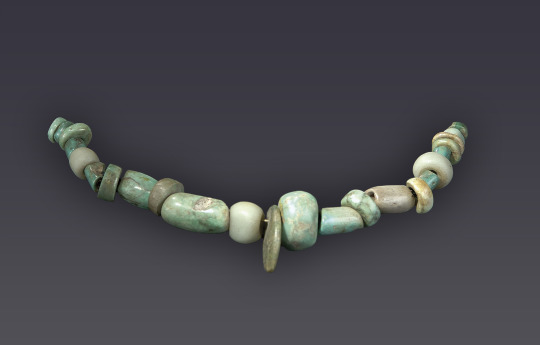
Variscite necklace, Brittany, France, 3rd millennium BC
from The National Archaeological Museum, France
206 notes
·
View notes
Text


The Standard of Ur is a Sumerian artifact of the 3rd millennium BC that is now in the collection of the British Museum. It comprises a hollow wooden box measuring 21.59 centimetres (8.50 in) wide by 49.53 centimetres (19.50 in) long, inlaid with a mosaic of shell, red limestone and lapis lazuli. It comes from the ancient city of Ur (located in modern-day Iraq west of Nasiriyah). It dates to the First Dynasty of Ur during the Early Dynastic period and is around 4,600 years old. The standard was probably constructed in the form of a hollow wooden box with scenes of war and peace represented on each side through elaborately inlaid mosaics. Although interpreted as a standard by its discoverer, its original purpose remains enigmatic. It was found in a royal tomb in Ur in the 1920s next to the skeleton of a ritually sacrificed man who may have been its bearer.
The original function of the Standard of Ur is not conclusively understood. Woolley's suggestion that it represented a standard is now thought unlikely. It has also been speculated that it was the soundbox of a musical instrument.[2] Paola Villani suggests that it was used as a chest to store funds for warfare or civil and religious works.[11] It is, however, impossible to say for sure, as there is no inscription on the artifact to provide any background context.
Although the side mosaics are usually referred to as the "war side" and "peace side", they may in fact be a single narrative – a battle followed by a victory celebration. This would be a visual parallel with the literary device of merism, used by the Sumerians, in which the totality of a situation was described through the pairing of opposite concepts.[12][13] A Sumerian ruler was considered to have a dual role as a lugal (literally "big man" or war leader) and an en or civic/religious leader, responsible for mediating with the gods and maintaining the fecundity of the land. The Standard of Ur may have been intended to depict these two complementary concepts of Sumerian kingship.[3]
The scenes depicted in the mosaics were reflected in the tombs where the "Standard" was found. The skeletons of attendants and musicians were found accompanying the remains of the kings, as was equipment used in both the "War" and "Peace" scenes of the mosaics. Unlike ancient Egyptian tombs, the dead were not buried with provisions of food and serving equipment; instead, they were found with the remains of meals, such as empty food vessels and animal bones. They may have participated in one last ritual feast, the remains of which were buried alongside them, before being put to death (possibly by poisoning) to accompany their master in the afterlife.[15]
181 notes
·
View notes
Text
The city of Ur was one of the most important Sumerian city states in ancient Mesopotamia during the 3 rd millennium BC. One of best preserved and most spectacular remains of this ancient city is the Great Ziggurat of Ur.
41 notes
·
View notes
Text

A 4,000-Year-Old Dagger Discovered in Poland
A copper dagger more than 4,000 years old was found in a forest near the town of Jarosław on the San River in south-eastern Poland. This discovery is the oldest dagger made of metal found in the Podkarpackie Voivodeship.
In the 3rd millennium BC, objects made of copper were extremely rare in the area, Dr Elżbieta Sieradzka-Burghardt, an archaeologist from the Jarosław museum, told PAP.
This valuable object, dating back over 4,000 years, was discovered last November by Piotr Gorlach of the Jarosław Historical and Exploration Association, who – with the permission of the Podkarpacie Regional Historical Monument Conservator in Przemyśl – conducted a search with a metal detector in the forests in the area of the Jarosław Forest Inspectorate, near the village of Korzenica.
“I had already finished my search for the day. When I returned to the car, I left the detector on out of habit. At some point, there was a signal. When I was digging up the forest floor, I saw a flat metal object covered with a green patina. I quickly realized that I was dealing with something much older than the military items from World War I and II that I was looking for in this area,” Gorlach said.
Archaeologists from the Museum in Jarosław Orsetti House identified the artifact as an extremely rare 4,000-year-old dagger. The ancient weapon was made of copper and measured just over 4 inches (10,5 cm) in length.
According to archaeologist Dr. Marcin Burghardt from the Jarosław Museum, the dagger discovered in Korzenica can be dated to the second half of the third millennium BC.
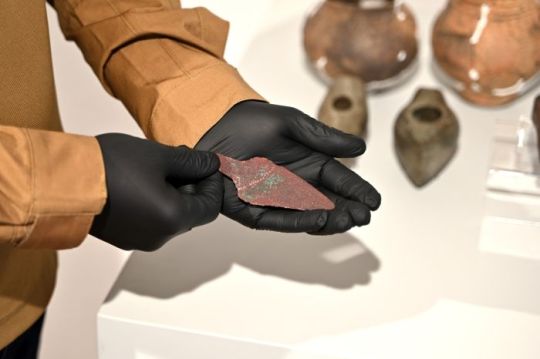
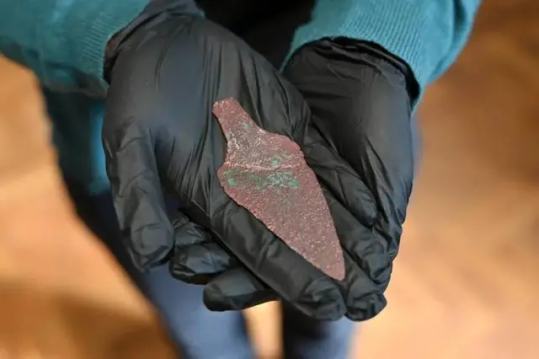
“In Polish lands, this is a period of enormous changes related to, among others, with a change in the main raw materials for the production of tools. Instead of flint tools commonly used in the Stone Age, more and more metal products appear, heralding the transition to the next period – the Bronze Age,” noted Dr. Burghardt.
In contrast, the now-discovered dagger from Korzenica – as noted by Dr Elżbieta Sieradzka-Burghardt, an archaeologist from the Jarosław museum – was not cast in bronze, but is made of copper.
“So it predates the development of bronze metallurgy,” the archaeologist noted. “In the third millennium BC, objects made of copper were extremely rare, so only people of the highest social status could afford them. There is rather no doubt that the dagger is not a local product,” Dr Burghardt-Sieradzka added.
During this period, metal products were imported from modern-day Ukraine or Hungary and only available to elites who could afford them. Links to the ancient weapon’s origin will be determined in the future through special metallurgical analysis.
By Leman Altuntaş.
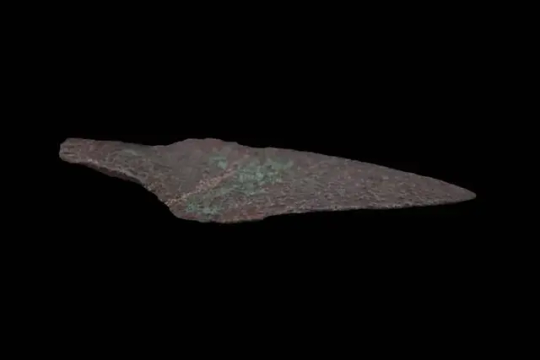
#A 4000-Year-Old Dagger Discovered in Poland#Jarosław#metal detecting#ancient artifacts#archeology#archeolgst#history#history news#ancient history#ancient culture#ancient civilizations
52 notes
·
View notes
Text
Online History Short-Courses offered by Universities Masterpost
Categories: Classical Studies, Egyptology, Medieval, Renaissance, The Americas, Asia, Other, Linguistics, Archaeology
How to get Coursera courses for free: There are several types of courses on Coursera, some will allow you to study the full course and only charge for the optional-certificate, for others you will need to audit it and you may have limited access (usually just to assignments), and thirdly some courses charge a monthly subscription in this case a 7 day free trial is available.
Classical Studies 🏛️🏺
At the Origins of the Mediterranean Civilization: Archeology of the City from the Levant to the West 3rd-1st millennium BC - Sapienza University of Rome
Greek and Roman Mythology - University of Pennsylvania
Health and Wellbeing in the Ancient World - Open University
Roman Architecture - Yale
Roman Art and Archeology - University of Arizona
Rome: A Virtual Tour of the Ancient City - University of Reading
The Ancient Greeks - Wesleyan University
The Changing Landscape of Ancient Rome. Archeology and History of Palatine Hill - Sapienza University of Rome
Uncovering Roman Britain in Old Museum Collections - University of Reading
Egyptology 𓂀⚱️
Egypt before and after pharaohs - Sapienza University of Rome
Introduction to Ancient Egypt and Its Civilization - University of Pennsylvania
Wonders of Ancient Egypt - University of Pennsylvania
Medieval 🗡️🏰
Age of Cathedrals - Yale
Coexistence in Medieval Spain: Jews, Christians, and Muslims - University of Colorado
Deciphering Secrets: The Illuminated Manuscripts of Medieval Europe - University of Colorado
Enlightening the Dark Ages: Early Medieval Archaeology in Italy - University of Padova
Lancaster Castle and Northern English History: The View from the Stronghold - Lancaster University
Magic in the Middle Ages - University of Barcelona
Old Norse Mythology in the Sources - University of Colorado Bolder
Preserving Norwegian Stave Churches - Norwegian University of Science and Technology
The Book of Kells: Exploring an Irish Medieval Masterpiece - Trinity College Dublin
The Cosmopolitan Medival Arabic World - University of Leiden
Renaissance ⚜️🃏
Black Tudors: The Untold Story
European Empires: An Introduction, 1400–1522 - University of Newcastle
The Mediterranean, a Space of Exchange (from Renaissance to Enlightenment) - University of Barcelona
The Life and Afterlife of Mary Queen of Scots - University of Glasgow
The Tudors - University of Roehampton London
The Americas 🪶🦙🛖
History of Slavery in the British Caribbean - University of Glasgow
Indigeneity as a Global Concept - University of Newcastle
Indigenous Canada - University of Alberta
Indigenous Religions & Ecology - Yale
Asia 🏯🛕
Contemporary India - University of Melbourne
Introduction to Korean Philosophy - Sung Kyun Kwan University
Japanese Culture Through Rare Books - University of Keio
Sino-Japanese Interactions Through Rare Books - University of Keio
The History and Culture of Chinese Silk - University for the Creative Arts
Travelling Books: History in Europe and Japan - University of Keio
Other
A Global History of Sex and Gender: Bodies and Power in the Modern World - University of Glasgow
A History of Royal Fashion - University of Glasgow
Anarchy in the UK: A History of Punk from 1976-78 - University of Reading
Biodiversity, Guardianship, and the Natural History of New Zealand: A Museum Perspective - Te Papa
Empire: the Controversies of British Imperialism - University of Exeter
Great South Land: Introducing Australian History - University of Newcastle
Indigeneity as a Global Concept - University of Newcastle
New Zealand History, Culture and Conflict: A Museum Perspective - Te Papa
Organising an Empire: The Assyrian Way - LMU Munich
Plagues, Witches, and War: The Worlds of Historical Fiction - University of Virginia
Russian History: from Lenin to Putin - University of California Santa Cruz
Linguistics 🗣️
Introduction to Comparative Indo-European Linguistics - University of Leiden - Coursera version
Miracles of Human Language: An Introduction to Linguistics - University of Leiden
Archeology 💀
Archeoastronomy - University of Milan
Archaeology and the Battle of Dunbar 1650 - Durham University
Archaeology: from Dig to Lab and Beyond - University of Reading
Archeology: Recovering the Humankind's Past and Saving the Universal Heritage - Sapienza University of Rome
Change of Era: The Origins of Christian Culture through the Lens of Archaeology - University of Padova
Endangered Archaeology: Using Remote Sensing to Protect Cultural Heritage - Universities of Durham, Leicester & Oxford
Enlightening the Dark Ages: Early Medieval Archaeology in Italy - University of Padova
Exploring Stone Age Archaeology: The Mysteries of Star Carr - University of York
Forensic Archaeology and Anthropology - Durham University
Roman Art and Archeology - University of Arizona
The Changing Landscape of Ancient Rome. Archeology and History of Palatine Hill - Sapienza University of Rome
#side note: most of the universities that offer courses in English on these sites are European or American(USA)#so the lack of courses about Asia (other than Japan) The Americas and Africa is not because of me#history#historical#classical studies#ancient Greece#ancient Rome#pompeii#Egyptology#pharaoh#ancient Egypt#medieval#medieval europe#Medieval Arabia#Renaissance#Tudor#the tudors#history courses#courses#linguistics#archeology#archeology courses#resources#free resources
166 notes
·
View notes
Text

Gold necklace, Georgia, 3rd millennium BC
from The Georgian National Museum
436 notes
·
View notes
Text

Western Asiatic vessel (chlorite, c. 3rd millennium BC)
from here
17 notes
·
View notes
Text


Two large painted pottery jars, Neolithic period, Majiayao culture, Banshan type, late 3rd millennium BC.
Courtesy Alain Truong
13 notes
·
View notes
Text
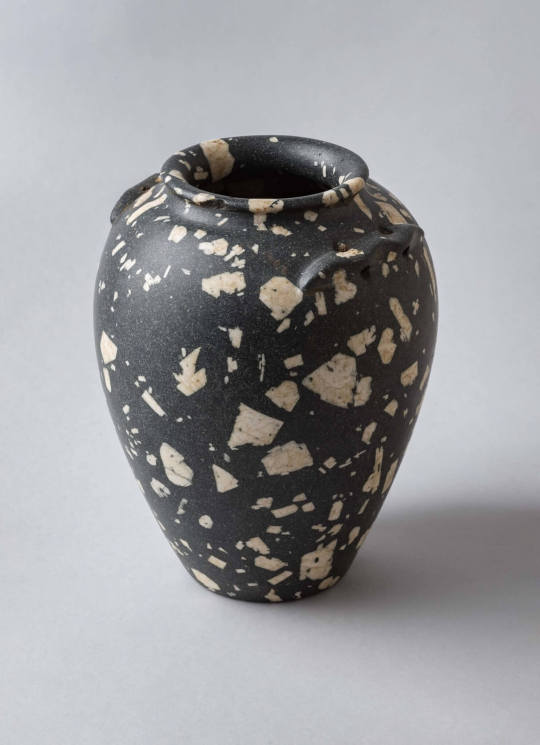
Andesite porphyry jar with wavy handles
This jar was found in a tomb dated to the Old Kingdom. An object handed down from generation to generation: the wavy handle is in fact a decorative motif typical of the Predynastic Period.
The working of stone vessels was perfected over the fourth millennium, and large numbers were produced in the Early Dynastic Period, following the unification of Egypt.
To make this vase was used a rock, called black porphyry, composed of minerals of different sizes. This choice has made the process far from easy because these minerals respond differently to mechanical stresses, increasing the risk of breakage.
Old Kingdom, 3rd Dynasty, ca. 2592-2544 BC. Dimension: 23 x 18.3 x 20.7 cm. From Gebelein. Now in the Egyptian Museum of Turin. S. 14089
Read more
34 notes
·
View notes
Photo

Archaic cities in the Middle East, 2900 BC.
by LegendesCarto
98 notes
·
View notes
Text
The Anunnaki: The First Family of Gods? - Historic Mysteries
https://www.historicmysteries.com/anunnaki/
View On WordPress
#2124 BC#2144 BC#3rd Dynasty of Er#3rd millennium BC#Akkadian Period#Akkadians#An#Annunaki#Aryan Race#Assyrians#Babylonians#David Icke#Enki#Enlil#Eridu#Inanna#Ki#King Gudea#Melam#Mesopotamia#Nanna#Netherworld#Ninhursay#polytheism#Reptilians#Sumerians#Utu
1 note
·
View note
Text

Gold pin, Greece, 3rd millennium BC
from The National Museum of Archaeology, Athens
134 notes
·
View notes
Text

Who is Levi?
Leviathan, Hebrew Livyatan, in Jewish mythology, a primordial sea serpent. Its source is in prebiblical Mesopotamian myth, especially that of the sea monster in the Ugaritic myth of Baal (see Yamm). In the Old Testament, Leviathan appears in Psalms 74:14 as a multiheaded sea serpent that is killed by God and given as food to the Hebrews in the wilderness. In Isaiah 27:1, Leviathan is a serpent and a symbol of Israel’s enemies, who will be slain by God. In Job 41, it is a sea monster and a symbol of God’s power of creation
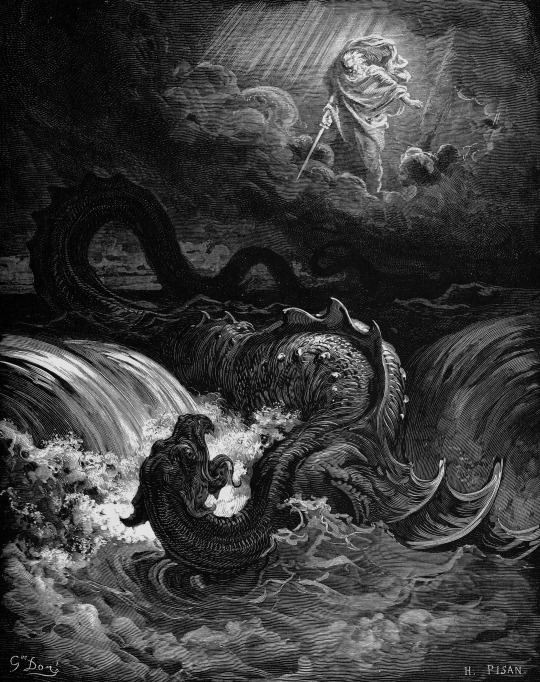
Etymology:
Gesenius (among others) argued the name לִוְיָתָןwas derived from the root לוה lwh "to twine; to join", with an adjectival suffix ן- ָ, for a literal meaning of "wreathed, twisted in folds". If it exists, the adjectival suffix ן- ָ (as opposed to -ון) is otherwise unattested except perhaps in Nehushtan, whose etymology is unknown; the ת would also require explanation, as Nechushtan is formed from neḥšoeṯ and Leviathan from liveyah; the normal-pattern f.s. adjective would be לויון, liveyon. Other philologists, including Leskien, thought it a foreign loanword. A third school considers it a proper noun. Bauer proposed לוית+תן, for "wreath of serpent."
Both the name and the mythological figure are a direct continuation of the Ugaritic sea monster Lôtān, one of the servants of the sea god Yammu defeated by Hadad in the Baal Cycle. The Ugaritic account has gaps, making it unclear whether some phrases describe him or other monsters at Yammu's disposal such as Tunannu (the biblical Tannin). Most scholars agree on describing Lôtān as "the fugitive serpent" (bṯn brḥ) ,but he may or may not be "the wriggling serpent" (bṯn ʿqltn) or "the mighty one with seven heads" (šlyṭ d.šbʿt rašm). His role seems to have been prefigured by the earlier serpent Têmtum whose death at the hands of Hadad is depicted in Syrian seals of the 18th–16th century BC.

Mythology:
Sea serpents feature prominently in the mythology of the ancient Near East. They are attested by the 3rd millennium BC in Sumerian iconography depicting the god Ninurtaovercoming a seven-headed serpent. It was common for Near Eastern religions to include a Chaoskampf: a cosmic battle between a sea monster representing the forces of chaos and a creator god or culture hero who imposes order by force. The Babylonian creation myth describes Marduk's defeat of the serpent goddess Tiamat, whose body was used to create the heavens and the earth.
—all art was found via Google, it doesn’t not belong to me, but to the artist who created it. If you see any art depicted on my channel that is yours and you do not want it shared, just tell me, I’m on your side ^_^-
#obey me#obey me shall we date#obey me leviathan#obey me!#obey me demonology#obey me origins#3rd husband
87 notes
·
View notes
Text
Flower language for Mikey
In chapter 270, the door of TR's secrets was opened, and also revealed the heartbreaking state of Manjiro, who eventually passed away.
Shinichiro gave a proper funeral for his precious little brother, dedicating a sea of flowers to him, expressing his feelings for Mikey.
Among the floral composition we can see orchids, roses, lilies, gypsophila and several gentian flowers.
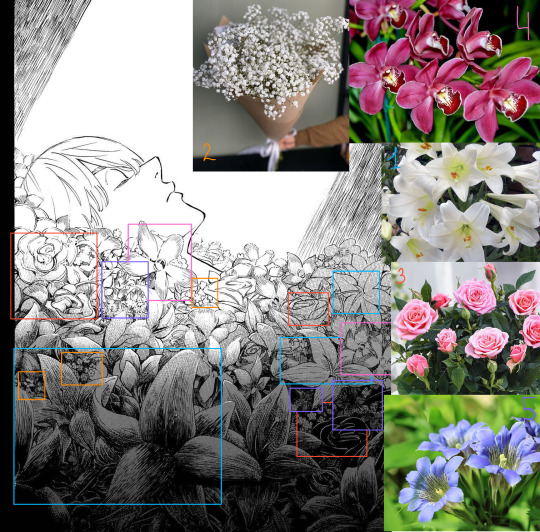
First of all, it should be noted that funerals in Japan are Shinto with elements of Buddhism. And they are characterized by the use of colors of calm shades and white.
For funerals in Japan, lilies, orchids and chrysanthemums are used, but you can also choose other flowers that comply with norms and traditions.
Flowers for funerals are of great importance, there are certain rules for giving/offering them that should be followed.
1. Lilies
Lilies have a worldwide meaning of "purity and innocence". But, besides this, there is the meaning of “dignity, greatness”, which originates from the 3rd millennium BC. in the form of a royal lily emblem.
The meaning of "innocence" lily began to acquire with the spread of Christianity. Therefore, you can find images of Christ among the lilies or the identification of the Virgin Mary with an immaculate lily.
2. Gypsophila
Gypsophila in the language of flowers means "innocence and purity", "divinity" and "eternal love". The meaning of "eternal love" dates back to Victorian England, where gypsophila was used in wedding bouquets. This flower has an informal name, "baby's breath", which may refer to the child's chastity.
3. Roses
These are one of the most classic colors. But the bottom line is that roses were not used for funerals in Japan before, and only in recent years have they begun to be used.
For roses, there is one common meaning “eternal love”.
4. Orchid
A luxurious and expensive flower that is used in Japan at the funerals of influential or wealthy people.
Orchid is the queen of flowers, meaning “flight of happiness”, “pure love”, “tender memories”.
5. Gentian
Gentian is an autumn flower that dilutes the faded landscape with purple, is a medicinal and ornamental plant. The flower means “I love you when you are sad” and “sincere love”.
The flowers that surround Mikey are very diverse and beautiful.
An innocent and pure person, like a child, this is how Manjiro Sano originally appeared before our eyes. He does what he likes, takes offense if there is no flag in his children's dinner, makes friends only with those who are interesting to him and easily influenced by others.
And the very greatness of Manjiro is immortalized in flowers. It's like he's not dead, but just sleeping on a flower bed. Arrogant and superior. Sets high goals for himself and leads the people like a brilliant king.
The flowers show all of Shin's great love for his little brother, as a symbol of beautiful and sincere love. After all, Shinichiro loves Manjiro, and Manjiro loves Shinichiro. They cannot live without each other and suffer when they are alone.
As flowers grow from the earth, so love is born from nature.
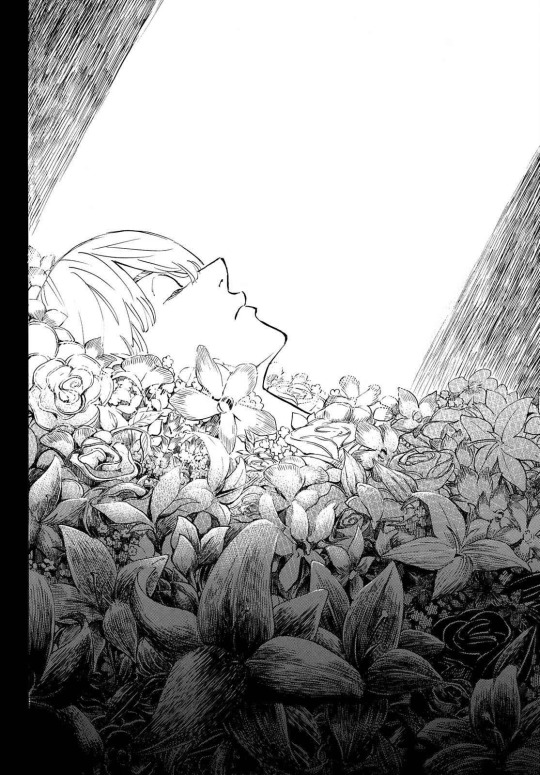
#tokyo revengers#manjiro sano#mikey sano#toman mikey#manga#sano shinichiro#tokrev shinichiro#analysis
251 notes
·
View notes